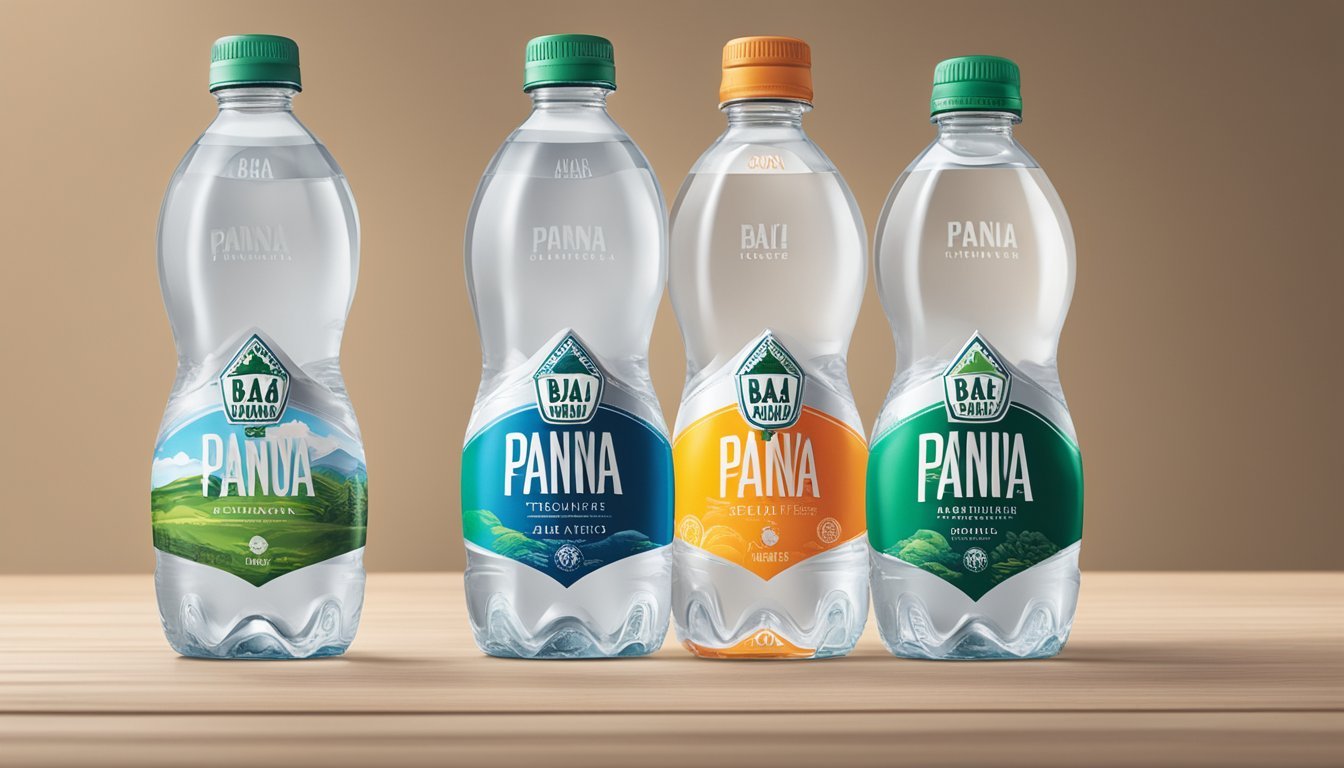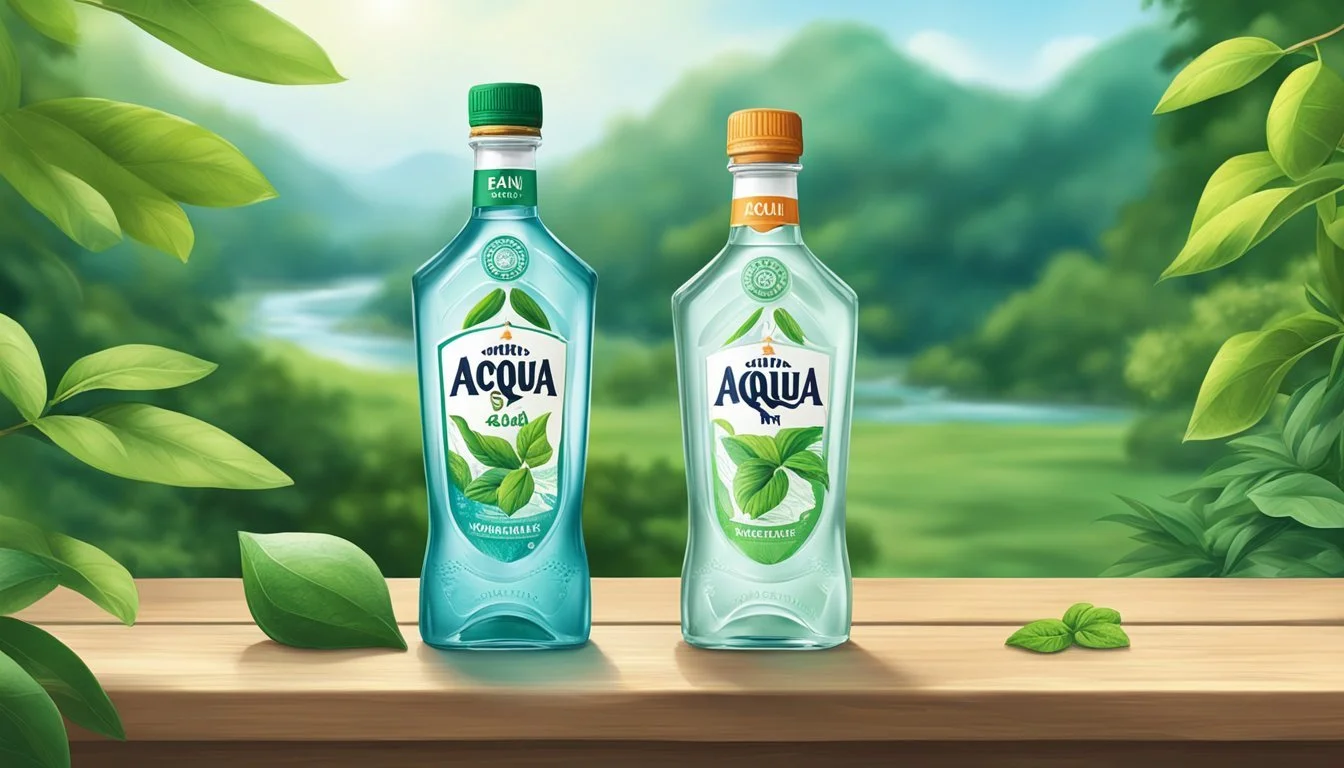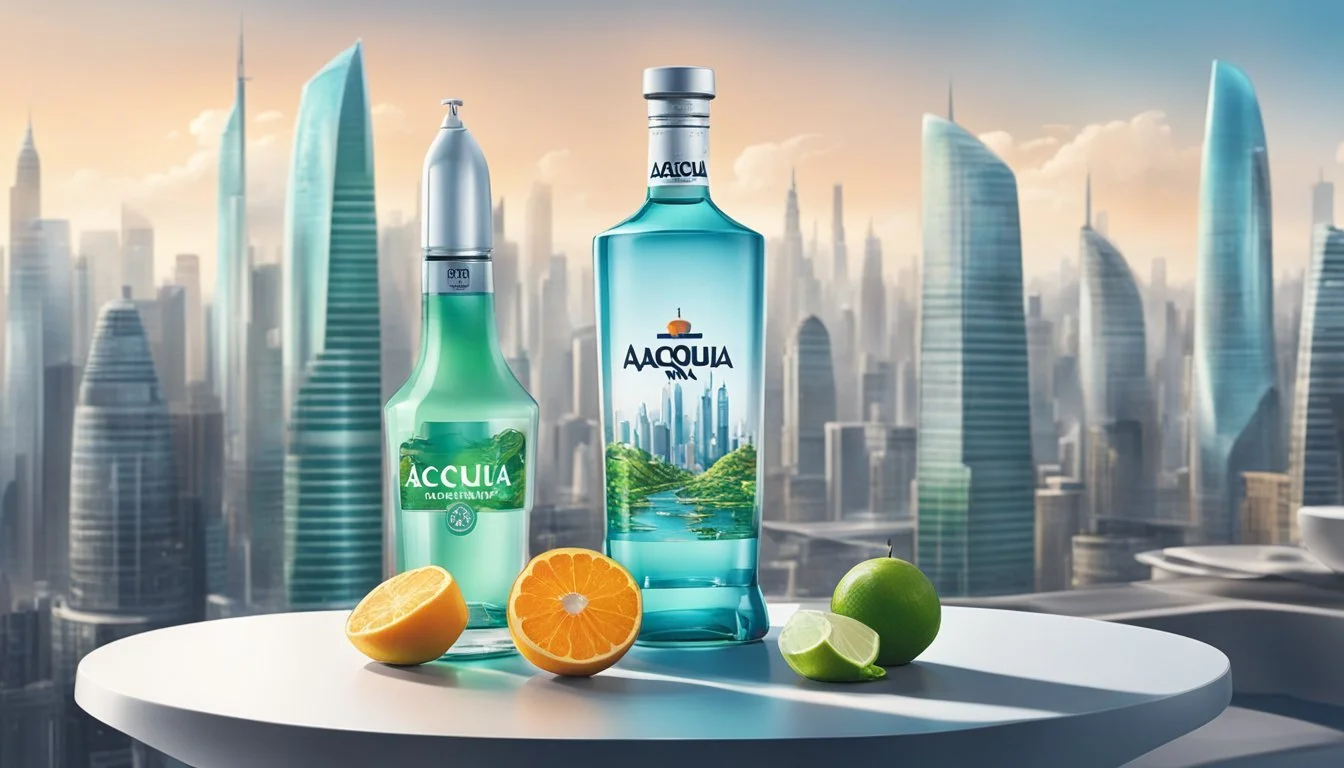Acqua Panna vs. Bai Bottled Water
A Comprehensive Comparison
In the realm of bottled water, consumers are faced with a plethora of choices, each boasting unique sources, purification processes, and taste profiles. Acqua Panna and Bai represent two distinct offerings within this saturated market. Acqua Panna, sourced from the hills of Tuscany, is synonymous with fine dining and is known for its smooth taste, which has made it a favored choice in high-end restaurants. On the other hand, Bai is recognized for its range of infused waters and juices that come with added vitamins and antioxidants, offering a different take on hydration with a health-conscious approach.
Despite Bai's more extensive product line focusing on flavor and nutritional enhancement, the comparison becomes particularly interesting when examining their take on plain bottled water. Acqua Panna's natural spring water is positioned as a premium product, with its brand being associated with sophistication and the Italian art of dining. This contrasts with the Bai brand, which may not be as well-known for its bottled water, but whose image is anchored in modern, health-oriented lifestyles.
The choice between Acqua Panna and Bai water ultimately depends on the consumer's priorities, whether they place a higher value on the tradition and purity associated with Acqua Panna or the functional benefits and contemporary branding of Bai. Therefore, individuals must consider factors such as taste preference, brand perception, and the intended use of the water—be it for a fine dining experience or daily functional hydration—when selecting their preferred bottled water.
History and Origin
The history and provenance of bottled water brands offer a unique insight into their quality and heritage. Here we'll explore the origins of Acqua Panna and Bai, two distinct brands that cater to consumers worldwide, each with its own story and source.
Acqua Panna: Tuscany's Offering
Acqua Panna traces its roots back to the scenic hills of Tuscany, Italy. The name itself originates from Villa Panna, where its acclaimed natural spring was discovered. Date of first bottling: 1880. This still water—untouched by carbonation—quickly rose to prominence, distinguished by its natural filtration through a 13-year journey in the Tuscan aquifer before reaching the surface. The serene Apennines Mountains, rising 1,128 meters, are the sanctuary for the source of Acqua Panna. Its historical significance and pristine location have contributed to the brand's international recognition.
Bai: Brand Overview
While not as old as Acqua Panna, Bai has made a name for itself as an innovative brand in the beverage industry. Founded in the 21st century, Bai emphasizes antioxidant infusion and flavorful experiences in its products. Although not traditionally known for bottled water, Bai focuses on using exotic fruit ingredients with claimed health benefits, marking a departure from the classic heritage of brands like Acqua Panna. Their marketing approach is centered around the infusion of antioxidants from coffeefruit and white tea into their flavored drinks. Bai's origin, contrasting with the historical springs of Tuscany, roots itself in modern consumer preferences for wellness and flavor-infused beverages.
Production and Source
In the realm of bottled water, the quality often hinges on the source and the production methods. Acqua Panna and Bai have distinct approaches to sourcing and processing their water, each contributing to the unique characteristics of the final product.
Natural Spring Water Collection
Acqua Panna taps into the Tuscan Apennines' natural bounty, where water filters through limestone rocks and collects in a secluded spring in Mugello. The history-rich region of Tuscany harbors the water, allowing it to embody the purity and mineral balance found in the groundwater. This natural filtering through geological formations contributes to the spring water’s soft taste and mineral composition.
In contrast, Bai sources its water from various spring locations, focusing on the integration of unique fruit flavors. Although not as defined as Acqua Panna’s single-source origin, Bai's selection of spring water aims to harmonize with their infusion of antioxidants and natural ingredients.
Filtration and Purification Processes
Acqua Panna undergoes a meticulous filtration process, although it naturally gains a level of purity from the journey through the subterranean layers of the Apennine terrain. The brand prioritizes maintaining the natural quality of the water, ensuring a gentle handling that allows the water to retain its unique properties.
Bai places emphasis on not just sourcing, but also on the enhancement of their water. Their filtration process is designed to ensure purity while setting the stage for their added flavors. While specifics about Bai's filtration intricacies are not as transparent, they claim to use a purification system that ensures a clean, crisp water base for their products.
Both brands prioritize the cleanliness and safety of their products while upholding different philosophies regarding the journey from source to bottle. Acqua Panna reflects the natural equilibrium of its Tuscan roots, and Bai strives to create a harmonious blend of spring water with flavorful additions.
Taste and Quality
In evaluating Acqua Panna and Bai bottled waters, discerning consumers prioritize taste and quality, often reflected in their flavor profile and the balance of pH and minerals. Each brand offers its own unique appeal based on these characteristics.
Flavor Profile
Acqua Panna: Sourced from the hills of Tuscany, Acqua Panna boasts a smooth and slightly velvety taste. This natural spring water's flavor is often described as neutral, with no strong aftertaste, making it a favorite among those who prefer water that complements rather than overpowers.
Bai: Bai's products are known for their flavored water infused with antioxidants. While the company’s range includes many flavors, the base water itself aims to have a clean and crisp taste with the added essence of fruit flavors, which may appeal to those seeking a more pronounced taste experience.
PH Level and Mineral Content
Acqua Panna
pH Level: Approximately 8.0
Mineral Content: Contains a balanced mineral composition, including calcium, magnesium, and bicarbonates, contributing to its soft and smooth taste.
Bai
pH Level: Typically ranges around 7.5
Mineral Content: Bai water is not primarily marketed as mineral water, but its antioxidant infusion involves minerals like selenium.
Each brand offers specific characteristics that cater to different taste preferences and quality assurances. Acqua Panna tends to satisfy those who desire natural water with a subtle taste and balanced mineral content, while Bai appeals to those looking for enhanced water taste with additional flavors and antioxidant benefits.
Health Benefits
When comparing the health benefits of Acqua Panna and Bai bottled water, it's essential to consider factors like hydration, mineral content, and overall contribution to health.
Acqua Panna is natural spring water known for its purity and absence of added chemicals. It provides effective hydration, a fundamental health benefit, helping to maintain bodily functions and support kidney health. Acqua Panna contains naturally occurring electrolytes, such as calcium, magnesium, and bicarbonate, which can aid in replenishing the body's minerals during hydration.
Hydration: Essential for maintaining physiological balance.
Minerals: Calcium and magnesium contribute to bone health.
Bicarbonate: Can help maintain pH balance in the body.
Bai bottled water, specifically Bai Antioxidant Water, focuses on providing hydration with added health benefits. It is infused with antioxidants from the coffee fruit and electrolytes to support overall wellness. Bai Antioxidant Water is also alkaline water, with a pH level higher than that of regular tap water.
Antioxidants: Help to protect cells from oxidative damage.
Electrolytes: Support hydration and muscle function.
Alkaline Water: Claims of contributing to neutralizing body acidity, though research is not conclusive.
Both brands offer unique health benefits: Acqua Panna provides natural minerals and Bai offers antioxidants and alkaline properties. Consumers should consider their dietary needs and preferences when choosing between these bottled waters.
Packaging and Sustainability
In the context of bottled water, the materials used for packaging and the resulting environmental impact are pivotal considerations for sustainability. Acqua Panna and Bai take different approaches to these aspects, each with its unique implications on the environment.
Bottle Materials
Acqua Panna emphasizes its commitment to sustainability by using glass bottles, which are 100% recyclable and can be reused many times before recycling. Glass packaging serves as a premium offering that aligns with the brand's positioning. In contrast, Bai primarily utilizes plastic bottles, which are lighter in weight and less fragile, making them easier to transport and less likely to break. However, they tend to be less sustainable than glass, as plastics can be recyclable but often end up in landfills.
Environmental Impact
The impact of bottled water on the environment extends beyond the materials used. Acqua Panna's use of zero-emission machinery in bottling reflects an effort to mitigate the environmental footprint during production. Additionally, as stated in the search results, the brand's source protection ensures the microbiological purity of their spring water without compromising the surrounding ecosystem.
Bai, while employing plastic in its packaging, has opportunities to focus on other areas of sustainability, such as boxed water solutions, which might offer a more environmentally friendly alternative to plastic bottles due to better recycling rates and the use of renewable resources in their production.
Both brands have a role to play in addressing the sustainability challenges of their packaging choices and the broader environmental impacts that result from their production and distribution.
Brand Comparisons
When examining Acqua Panna and Bai in the context of the bottled water market, it is essential to consider the unique qualities they both offer against their respective competitors. This comparison will scrutinize their sources, taste profiles, and market positioning.
Acqua Panna vs. Other Premium Brands
Acqua Panna, hailing from Tuscany, Italy, is often associated with its sister brand, San Pellegrino, known for its fine dining appeal. Both are owned by Nestlé, and Acqua Panna's still water contrasts with San Pellegrino's sparkling reputation. When compared to other premium brands such as Fiji, which boasts water filtered through volcanic rock, or Evian, sourced from the French Alps, Acqua Panna prides itself on a naturally occurring electrolyte balance, providing a smooth and clean taste.
Other competitors include Voss, presented in its iconic cylindrical bottle, and known for its Norwegian artesian source, and Smartwater, which markets itself through electrolyte-enhanced vapor-distilled water. Icelandic Glacial and Mountain Valley also present unique selling points with their naturally alkaline and American spring-sourced waters, respectively.
Table 1: Acqua Panna and Premium Brand Comparison
Brand Source Unique Quality Acqua Panna Tuscany, Italy Natural electrolytes, smooth Fiji Fiji, volcanic filters Silica, electrolytes Evian French Alps, glacial Mineral balance, crisp Voss Norway, artesian Minimal mineral content Smartwater Distilled, added electrolytes Electrolyte-enhanced Icelandic Glacial Iceland, alkaline Carbon neutral, high pH Mountain Valley Arkansas, USA, spring American source, glass bottling
Bai and Its Competitors
Bai brands itself as an antioxidant water, diverging from the traditional bottled water market by incorporating infused fruit flavors and antioxidants. While it competes with typical bottled waters like Dasani and Aquafina, both backed by soda giants Coca-Cola and PepsiCo, Bai creates a niche within enhanced waters. These competitors lean towards purification processes with Dasani adding minerals for flavor and Aquafina touting a rigorous HydRO-7 filtration method.
Among enhanced water products, Core Hydration emphasizes its ultrapurified water with electrolytes and a neutral pH balance, rivaling Bai's position. Products like LIFEWTR, which stresses its pH balance and artistic bottle design, Vitaminwater, with its added nutrients and sugars, and Liquid Death, offering water in a can, are all part of this wider category. This sector is further expanded with eco-conscious brands such as Waiakea and Castle Rock, which focus on sustainability and natural filtration.
Table 2: Bai and Competitor Enhanced Water Comparison
Brand Unique Selling Point Market Segment Bai Antioxidants, fruit-infused, no sugar Antioxidant-infused water Core Hydration Ultrapurified, electrolytes, pH balanced Enhanced hydration LIFEWTR pH balanced, artist-designed bottles Enhanced artistic water Vitaminwater Added nutrients, variety of flavors Nutrient-enhanced water Liquid Death Canned, straightforward branding Eco-friendly water Waiakea Hawaiian volcanic filtration, sustainable Eco-conscious water Castle Rock Naturally filtered, sustainability Earth-friendly choice
It is clear each brand has carved out its own space within the broader industry by offering distinctive products that cater to various tastes and values. Acqua Panna and Bai each hold their own by providing unique attributes and brand stories that resonate with their target demographics.
Consumer Preferences
When it comes to bottled water, consumer preferences have shifted toward quality and taste. Discerning customers weigh factors like source quality and taste profile before making their choice between brands like Acqua Panna and Bai.
Market Trends
Recent market trends indicate a growing preference for premium water brands. Acqua Panna, with its natural spring source in Tuscany, has seen increased favorability among consumers who frequent upscale grocery stores and value natural purity. The water's smooth taste also makes it a popular choice in high-end dining establishments. On the other hand, Bai offers antioxidant infusion and bold fruit flavors that cater to a health-conscious audience. It is not uncommon to see Bai's diverse lineup of flavored waters taking up considerable shelf space in grocery stores, signaling a broad consumer interest.
Acqua Panna: Preferred in upscale dining and by consumers valuing natural sources
Bai: Popular among health-conscious consumers for its antioxidant infusions
Water Sommelier Insights
Water sommeliers, specialists in water tasting and pairing, provide unique insights into the bottled water industry. Their expertise helps to shape consumer perceptions and preferences. A water sommelier might note that Acqua Panna brings a balanced mineral composition that complements a variety of dishes without overpowering the palate. These insights contribute to the brand's positioning as a top choice for culinary experiences. On the flip side, a water sommelier may point out that while Bai offers a range of intriguing flavors, it may not be the optimal choice for pairing with fine dining due to its distinct taste profiles that can contrast with gourmet flavors.
Acqua Panna: Recommended by water sommeliers for its balance and compatibility with fine foods
Bai: Recognized for its flavor innovation but less favored for pairing with high-end cuisine
Regulations and Standards
When analyzing bottled water brands such as Acqua Panna and Bai, understanding the regulatory framework helps ensure that consumers receive quality products. Acqua Panna, sourced from Tuscany, Italy, adheres to stringent standards set forth by the European Union, which are comparable and sometimes exceed those set by the United States Environmental Protection Agency (EPA).
The EPA enforces regulations to safeguard clean drinking water in the U.S., including bottled water. These include limits on contaminants and require regular testing routines. Standards focus on the microbiological purity of water, along with chemical and radiological safety criteria.
Bai operates under the same EPA guidelines, providing a level playing field for domestic bottled water suppliers. Additionally, Bai must comply with regulations regarding water source protections, manufacturing processes, and labeling requirements.
The following table outlines key areas of compliance for both brands:
Regulatory Area Acqua Panna Compliance Bai Compliance Source Protection EU standards for natural springs EPA standards for clean drinking water Contaminant Levels EU limits on microbiological/chemical content EPA limits on contaminants Manufacturing Processes EU regulations for bottling EPA-aligned bottling standards Labeling EU labeling directives U.S. FDA labeling requirements
Both brands are required to maintain consistent quality control measures to ensure the safety and purity of their water. Bottled water companies must regularly test for contaminants like nitrates, bacteria, and lead. They should also report findings with transparency to consumers.
Despite originating from different corners of the world, Acqua Panna and Bai are each subjected to rigorous health guidelines and quality standards designed to protect consumers and ensure the delivery of safe drinking water.
The Future of Bottled Water
The bottled water industry is gearing up for significant changes as it responds to new consumer demands and environmental challenges. Innovations in bottling and filtration are on the path to provide more sustainable and health-conscious options, and companies are now directing their flow of investments towards eco-friendly packaging and enhanced water quality.
Sustainability Focus:
Biodegradable bottles: Development of plant-based plastics and other materials that are less harmful to the environment.
Recycling programs: Increased emphasis on recycling initiatives to minimize plastic waste.
Quality and Innovation:
Advanced filtration: Utilization of cutting-edge filtration technologies to ensure purity and enhanced taste.
Functional waters: Introduction of added-value waters that provide additional health benefits beyond hydration.
Consumer Preferences:
Preference for natural sources: A growing trend toward naturally sourced waters with minimal processing to maintain mineral profiles.
Customization: The emergence of personalized water products tailored to individual dietary needs and taste preferences.
Moving forward, the industry must balance the consumer's demand for high-quality, convenient hydration solutions with the imperative to protect natural resources and reduce its ecological footprint. This is not only a commercial imperative but an ethical one, as access to clean water is a fundamental human right. Bottled water companies must continuously evolve to ensure they remain relevant in a future that demands more than just taste and convenience.
Conclusion
When considering Acqua Panna and Bai bottled waters, consumers often weigh the characteristics that are most important to them, such as taste, source, and processing methods.
Acqua Panna is a natural spring water known for its smoothness and is sourced from Tuscany, Italy. It boasts a long filtration process, around 13 years through the aquifer before being bottled at the source, and is recognized for being untouched by additional treatments.
On the other hand, Bai offers antioxidant-infused beverages, which are not traditional bottled waters, but rather water-based drinks enhanced with flavors, sweeteners, and added antioxidants.
In terms of type of water, Acqua Panna is a straightforward, unmodified natural spring water, while Bai focuses on providing a water-based drink with added benefits and flavors.
Aspect Acqua Panna Bai Type of Water Natural Spring Water Antioxidant-Infused Water Drink Source Tuscany, Italy Not specified Processing Unprocessed, Natural Flavors and Sweeteners Added
Consumers seeking a pure and natural water experience would likely prefer Acqua Panna, considering its origin and lack of modifications. Those looking for a drink that offers additional flavor and health-related additives might gravitate towards Bai. Ultimately, the bottom line choice between the two brands depends on individual preferences regarding purity and taste.








